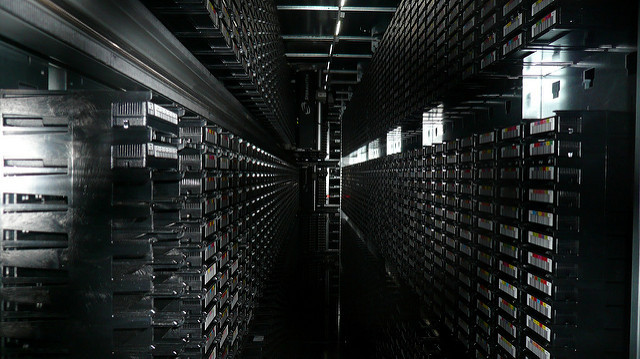How to reduce storage costs

/ photo Cory Doctorow CC
Everyone who has come across virtualization technologies that are gaining popularity is surely aware of various cost savings that have already been confirmed by the earliest VMware polls: total cost of ownership (TCO) in this case is reduced by an average of 74%. At the same time, many overlook the part of the infrastructure that concerns data storage.
')
Infrastructure developers often do not pay enough attention to the organization of data storage systems, which leads to irrational use of technology and inefficient distribution of the load on services. This leads to an increase in prices for the corresponding tools, while from 30% to 70% of the cost goes to the consultation of specialists.
In our blog on Habré, we repeatedly raised issues related to this topic: we talked about storage devices, considered new technologies of the future and talked about the applicability of Moore's law to predicting the situation. Today we would like to discuss the cost-cutting approaches that underlie the idea that, in the era of lean manufacturing, it is the data storage infrastructure that is one of the obvious solutions that allow for good savings.
Everyone knows that data needs to be stored somewhere, and their volume increases over time. However, in order to see the difference between data storage tools and consider their advantages - which will be valid not for three years, as before, but five or even seven in most organizations - you need to have certain technical knowledge.
The main difficulty of infrastructure developers is to be able to discern more general trends in data storage and choose a strategy that would guarantee a reliable and efficient solution at a reasonable price for the company. To do this, you need to soberly assess the cost of storage components, as well as alternative options with high functionality that would allow you to optimize capital and operating costs.
According to leading industry analysts like Gartner, the cost of purchasing equipment is only one fifth of the annual cost of operating the storage system. Capital costs are extremely small compared to operating costs.
Companies often waste money and buy the best solutions on the market, but they also store application data on them that do not require high performance. The inability to use the advantages of hierarchical media management — the main technology for distributing data across the infrastructure in accordance with the frequency of requests, updates and other criteria — in practice leads to a sharp decrease in the efficiency of resource use.

/ photo Perspecsys Photos CC
As a provider of virtual infrastructure services, we are well aware that virtualization is a tool that fully reveals its potential only if it is used correctly. There are many types of virtualization ( here we talked about their pros and cons), and just as server virtualization reduced its cost and increased the efficiency of hosting and using server hardware, virtualization of storage systems can unleash the potential of infrastructure while reducing its cost. possessions.
In a virtualized storage environment, a resource pool is used, which removes the need to frequently change the infrastructure. Storage pools can have their own set of features and services, for example, with a focus on performance optimization. You can pooled low-performance disks that will hold the bulk of the data, and technologies such as thin provisioning, compression, and deduplication can be used depending on the needs of the site or infrastructure.
There are many approaches to storage virtualization: from installing a hardware controller, to which all storage systems are “attached”, and ending with virtualization of a connection or mount points (mount points) in which the storage system is connected to the server and its operating system. Systems of this type use DRAM, creating a common cache on all servers that can be used to buffer and speed up applications. In addition, it is possible to work with input / output channels between storage media and the server - and load distribution over these connections in order to constantly ensure the highest performance of connections between the server and the storage system.
Thus, all physical storage, memory and connections work within an integrated resource infrastructure that can be distributed and released, scaled and monitored without much difficulty: move data between levels, include specific data in a well-defined storage system, migrate data between volumes or pools . All these processes, which could take too much time and money, are greatly simplified in a virtualized data storage environment. With a suitable SDS solution, the process of implementing the necessary services in the infrastructure is greatly simplified.
Additional materials on the topic:
- How data centers are changing right now: Energy efficiency, data storage and the "clouds"
- Friday format: DNA and data storage solution
- Data Storage: What is the future?
- Future storage: Large capacity 3D discs
- A little about data storage and experience 1cloud
A little bit about how we improve the work of the 1cloud virtual infrastructure provider :
Source: https://habr.com/ru/post/301546/
All Articles